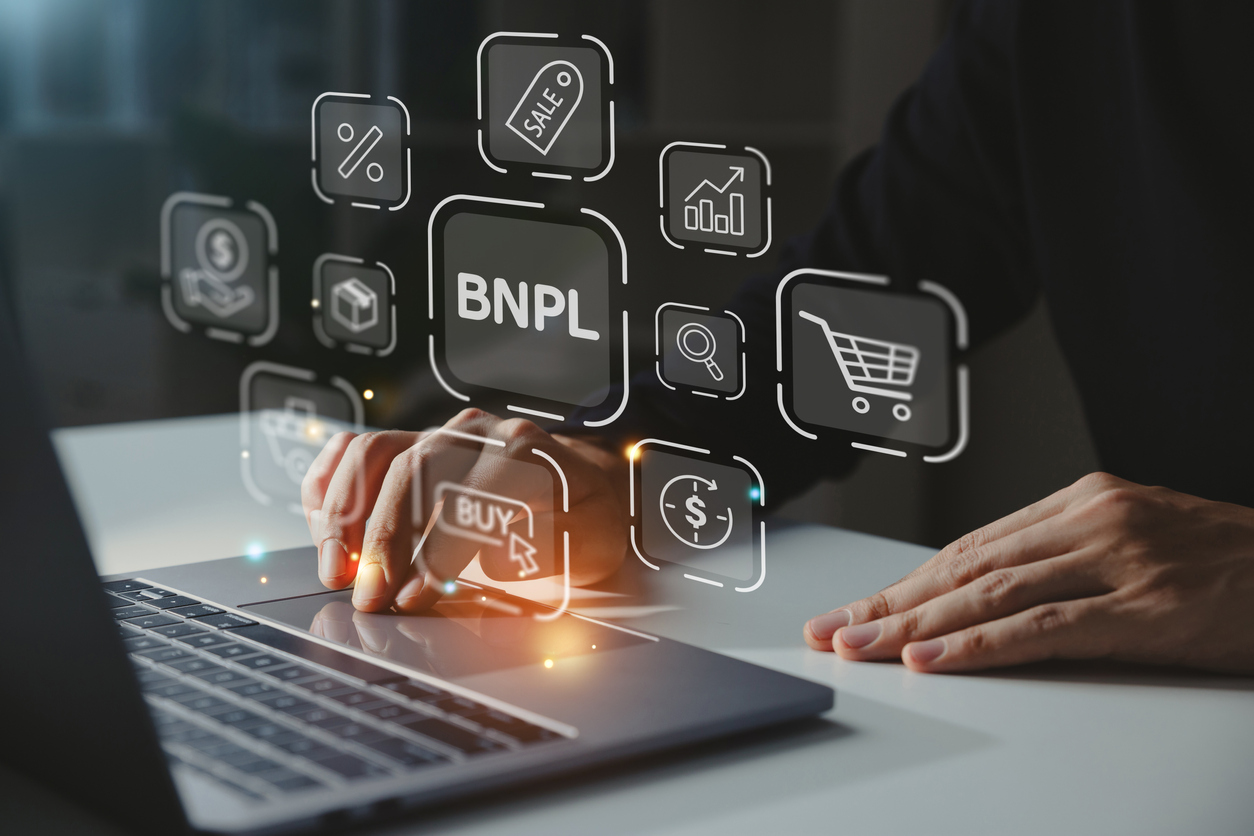With the price of dwelling skyrocketing and rising rates of interest, shoppers and companies have been turning to manufacturers that supply seamless, versatile cost and lending choices.
And as clients and companies navigate this tough monetary time, there’s a rising star: embedded lending. However this lending isn’t solely a short-term answer to see clients by way of recessions or tough occasions. Quite, it’s a sustainable answer that helps folks with monetary planning, changing into a significant factor in each transaction and offering financing accessibility when wanted. So, how is that this completely different from Purchase Now, Pay Later (BNPL) as we all know it? Let’s discover.
The rise and almost-fall of BNPL
BNPL options addressing ache factors with excessive bank card charges turned fashionable throughout the pandemic alongside the rise of on-line purchasing. This led varied fintechs and intermediaries, like Klarna, to launch customer-facing Pay in 3 or Pay in 4 choices. These options turned the usual deferred cost strategies on each on-line web site. Nonetheless, the difficulty was many BNPL suppliers supplied it to everybody with out credit score checks or reporting, leading to late charges and untraceable debt for shoppers.
Then got here the right storm: Regulators began to intently observe the recognition of BNPL alongside a shift within the financial system. This well timed duo rattled the BNPL sector and triggered accountable lending issues, plummeting valuations, and rising rates of interest. Giant suppliers knew they’d must both adapt—by limiting approvals and changing into extra clear—or undergo a significant blow out there.

Client downloads of BNPL apps have since declined and the variety of BNPL suppliers has diminished, leaving a handful of worldwide suppliers.
Embedded lending taking heart stage
Embedded lending is the modernization and digitization of point-of-sale (POS) lending that’s been round for many years—a short-term mortgage from a financial institution, credit score union, or regulated lender that permits shoppers to make a purchase order and pay it again in installments. For instance, within the conventional sense, this POS lending may appear like buying furnishings and having to fill out paperwork for the mortgage within the retailer. Nonetheless, this wasn’t an embedded expertise for the shopper, and it definitely wasn’t digital or user-friendly.
So, embedded lending isn’t a cost product however the reincarnation of regulated POS loans, taking learnings from what occurred with BNPL into consideration.
The BNPL increase throughout the pandemic proved a necessity for handy, frictionless cost choices. However whereas accessibility is the core of BNPL and a key driver of monetary inclusion, it should be achieved inside a extra regulated framework. Now, clients and retailers are after accountable and sustainable cost choices embedded within the buyer journey.
Evaluating customization: What’s the mortgage sort and site?
One of many traits of early BNPL was that it was on-line; no person spoke about BNPL in-store, although it existed in a conventional sense often called client POS finance. To ship this on-line buyer journey, retailers usually use a BNPL supplier so as to add financing packages to checkout and allow their clients to pay in installments.
Embedded lending options, nevertheless, provide way more numerous entry factors for each B2C and B2B transactions, offering an omnichannel financing expertise on-line, in-store, at house, or by way of name heart.
Then, there’s the query of customization. What if retailers desire a extra seamless, branded financing expertise for purchasers or to supply a variety of personalised monetary merchandise?
Banks and retailers alike can associate with white-labeled embedded lending enablers to embed mortgage merchandise in probably the most related manner for every use case, making a customer-centric financing expertise. By matching the correct sort of monetary answer—like installment loans, strains of credit score, deferred invoices, and dealing capital—to the transaction, buyer profile, and ticket measurement, shoppers and companies can entry optimum financing options for his or her wants.
Additionally, there’s the opportunity of a multi-lender waterfall answer that may smart-route a buyer’s financing software from prime lender to secondary lender, making certain excessive approval charges and buyer conversions.
B2B vs. B2C: Which financing answer fits which market?
As soon as upon a time, conventional BNPL was primarily for smaller B2C transactions, and 75% of BNPL customers had been millennials or Gen Z. Nonetheless, as companies more and more promote their services and products on-line to different companies, BNPL has begun to achieve traction within the B2B area. Whether or not ordering workplace provides or furnishings, enterprise patrons anticipate the identical easy financing expertise that they get as shoppers.
Nonetheless, keep in mind that companies are sometimes extra risk-averse than shoppers: They’ve historically swayed away from third-party BNPL suppliers that can’t provide a excessive degree of safety. A few of these suppliers additionally cost late charges or lack debt recommendation, which might influence buyer relationships. Furthermore, B2B typically caters to bigger loans and longer durations, which BNPL fintechs can discover more durable to offer.
That’s why, when the potential of embedded lending from regulated lenders got here to gentle, demand from the B2B sector soared. Companies are trying to find methods to offer a unified buyer expertise globally, and embedded lending permits them to maintain constant branding and communication whereas following the native necessities and rules. So, the added constructive is that regulatory our bodies don’t threaten this lending mannequin.
The truth is, with 40% of BNPL customers extra prepared to make use of BNPL from their financial institutions over fintechs, companies are beginning to see the worth of providing their very own pay-over-time choices by embedding mortgage and financing packages from banks. Firms can get their very own B2B lending answer to market rapidly utilizing e-commerce plugins, digital playing cards, or easy software programming interfaces (APIs) offered by embedded lending enablers.
B2C additionally requires an embedded lending mindset, particularly for bigger ticket gadgets in retail and sectors similar to healthcare, auto companies and contractor tasks. And, acutely aware of their model fairness, giant company manufacturers throughout many sectors are beginning to make selections to supply regulated merchandise or query their present BNPL practices. Discover that Peloton now works with Residents Pay, a number one financial institution within the point-of-sale financing/embedded lending area.
With an inflationary financial system and items and companies costing extra, shoppers and companies are more and more searching for inexpensive cost alternate options to bank cards. And though the demand for BNPL choices is persevering with to develop, an increase in rates of interest and buyer safety issues has made it harder for BNPL suppliers to function. Banks and controlled lenders can capitalize on this chance as they’ve a decrease price of capital and highly effective stability sheets to leverage, giving retailers the choice to supply aggressive, accountable embedded lending choices (from the world’s main banks and lenders).

